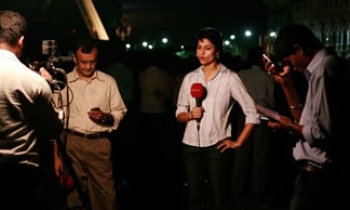New Delhi: For the past few weeks, Indian newspapers have seen a steady drumbeat of media stories on a case involving four employees of Mid-Day tabloid newspaper and their legal woes.
The fairly innocuous stories about a former chief justice of India and potential conflict of interests drew the wrath of the Delhi high court, which sentenced the employees, including three journalists, to jail terms because the stories, in the view of the court, impugned on the honesty of the Supreme Court. The Mid-Day employees are out on bail, pending an appeal.
While the stories are newsworthy, what is little noticed—and even less debated—is how unusual it is for Indian newspapers to talk about their own, and to name names.
That is because, industry observers note, there is often an unstated rule that prevails in most newspapers: media doesn’t write on media and media organizations won’t write about each other, either in praise or in criticism.
Indeed, almost all Indian newspapers simply ignore news that is first reported by another paper or, if the news is of such magnitude that they have to follow it, a few of them credit generic “media” reports, rather than name the paper that first reported the story. Most skip giving any credit—or blame—in cases where a reported story is wrong and a firm has come out and told a regulator, such as the Bombay Stock Exchange, about the incorrectness of the story.
To be sure, there are exceptions but, more often than not, such coverage is about freedom of press issues, such as the Mid-Day saga, where the print media is keen to protect one of its own from what it sees as judicial overreach. Or, in badmouthing television—either the entertainment end of it or the plethora of sting operations.
This general silence about its own is troubling to some observers, not just because of the traditional who is watching the watchdog issues, but also because the media industry, especially Indian print media, itself has become a huge business in recent years.
“Now that so much of public’s money is flowing into the industry, media practices and organizations should be scrutinized like any other organization or sector,” says Pramath Raj Sinha, until recently managing director and CEO of ABP Pvt. Ltd, which publishes The Telegraph newspaper and Businessworld magazine.
Many Indian media companies have been listed on the bourses as part of an advertising and circulation boom—especially in print—raising money from capital markets as well as through private equity and venture capital firms.









